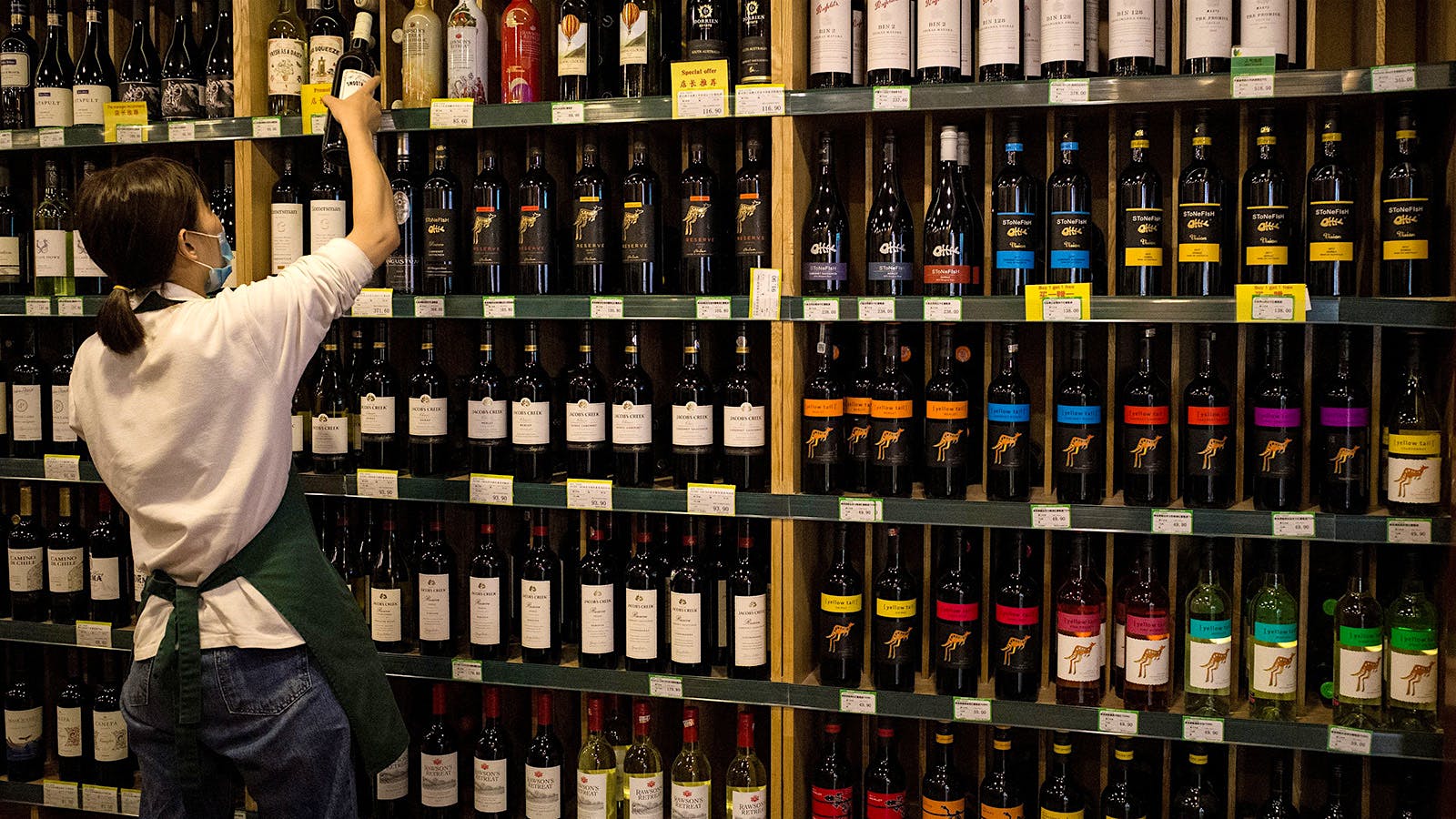Products You May Like
For the first time in nearly four years, Australian winemakers see signs of hope in their relationship with one of their biggest export markets. The Chinese government is reviewing painful tariffs of well over 100 percent on Australian wine that it implemented in 2020 after a political spat with Australia’s government. If it follows through and lifts the duties, it would greatly help the Australian wine industry, including many wineries that export to the U.S. market.
Tariffs Inflicted Nearly $750 Million of Pain Annually
When China imposed punitive tariffs in 2020, it was devastating for the Australian wine economy. In 2019, Aussie vintners exported 15 million cases of wine to the People’s Republic—about 18 percent of total wine exports by volume. China was Australia’s No. 1 wine export market by value before the trade war began. Worth an astonishing $790 million (AUS$1.2 billion) per year, it represented about 40 percent of Australia’s total wine exports by value. A mere 12 months after the new tariffs were imposed, sales to China had fallen to $54 million.
Tensions initially mounted in April 2020 when China’s government took umbrage at Australian officials calling for an international inquiry into COVID-19’s origins. Relations were already strained following Australia’s ban on Huawei’s involvement in the rollout of a 5G network two years prior, citing a national security risk given the tech giant’s close ties to the Chinese government.
China announced a trade investigation, alleging that Australia had been dumping cheap wine into the Chinese market to undercut local wines and that the Australian government was subsidizing wine exports. This announcement left the Australian government and wine producers bewildered. Both vehemently denied the allegations.
Still, Beijing implemented tariffs ranging between 116.2 percent and 218.4 percent, depending on the producer. Overnight, Aussie wines doubled and tripled in cost in key markets like Shanghai and Guangzhou.
Winemakers Asked: Persist or Walk Away?
With China suddenly an unfeasible option for most of Australia’s wine producers, many top wine companies faced an excess of Australian wine that had been slated for export. Decisions and plans needed to be made, and fast. First question: Should wineries walk away from the Chinese market?
“Brown Brothers decided that we would keep a presence in the China market, keeping China-based staff members employed and continuing to ship our wines to this market,” said Katherine Brown, fourth-generation winemaker and local area marketing manager at Brown Family Wine Group, a large family-owned business based in Victoria. “This was with the understanding of the higher prices that we would have to uphold and the challenges that would come with that.”

For many wine producers, however, the impacts weren’t just about the bottom line. “We lost around 5 percent of our sales,” said Corrina Wright, winemaker and director at Oliver’s Taranga in McLaren Vale. “But that doesn’t matter as much as the loss of relationships and being able to develop them further.”
Wright adds that the tariffs have led the industry to contract. “Where we have seen a much bigger impact is as a Penfolds grower for TWE [Treasury Wine Estates] and as a grower in general in a region like McLaren Vale, where a lot of the Shiraz and Cabernet for wines in high demand in China came from,” she said. “The reduction in demand for these varieties has huge impacts for our region.” Even wineries that did not depend on China were impacted, due to the excess of grapes.
Could the Tariffs Be Lifted?
There may be light at the end of the tunnel, however. When Australian Prime Minister Anthony Albanese announced a visit to China in November 2023, the Chinese government agreed to review the tariffs, which were otherwise set to last five years. The first visit from an Australian Prime Minister since 2016, it focused on stabilizing relations between the two countries.
During his visit, Albanese had a “very positive” meeting with Chinese President Xi Jinping. The Chinese media looked upon his visit favorably, too.

How soon could relief come? “We understand that China will lift their tariffs on Australian wines in March or April 2024,” said Brown. “With this, Brown Brothers is hopeful that we will be able to go back to pre-tariffs business within one year, though nothing is guaranteed, and [it] will require extensive efforts and marketing investments.”
Lessons Learned
With adversity comes opportunity, so what can Australian wine producers learn from this trade war? “If you were going to pull a positive out of this, it’d be that it’s taught the Australian wine industry not to put all their eggs in one basket,” said Michael Downer, winemaker at Murdoch Hill wines in the Adelaide Hills.
While full recovery may take several years, the Oliver’s Taranga outlook is one of hopeful optimism. “I hope we can visit all our friends again, share magnificent food and wine experiences and continue to grow relationships,” said Wright. “More importantly, I hope that it will be a lift in confidence for the region’s wineries and growers moving forward.”
Stay on top of important wine stories with Wine Spectator’s free Breaking News Alerts.
